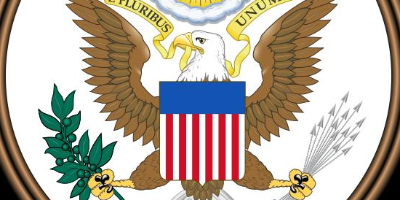Spanish-American War (apr 21, 1898 – aug 13, 1898)
Description:
A conflict between the United States and Spain. The war stemmed from the Cuban Revolution, in which Cubans seeked to overthrow their Spanish overlords and establish an independent republic. Spain violently repressed such rebellions, which US media used to shock the country into anger against Spain. Americans began thinking about intervening in Cuba to help them establish independence. Then, on February 15, the USS Maine, docked in the Cuban Havana Harbor, mysteriously exploded. The sensationalist "yellow press" in the US "blamed the Maine on Spain," creating the catchphrase "Remember the Maine! To hell with Spain!" Congress used both of these reasons to declare war on Spain on April 21.The actual war was short and uncontested - Spain's military power was waning rapidly while the US's was on the rise. The first battle was on May 1 at Manila Bay in the Philippines. The US squadron was led by Commodore George Dewey, who destroyed the Spanish armada there in just a few hours with under 10 people wounded. A dozen US ships attacked Puerto Rico's capital of San Juan on May 12.
Dewey then brought Emilio Aguinaldo, a Filipino rebel, from exile in Hong Kong and persuaded him to encourage his fellow Filipinos to revolt against Spain, which they did. US and Filipino forces quickly overwhelmed the Spanish, until Aguinaldo declared Philippine independence on June 12. Guam was captured on June 21, as they had no gunpowder and were unaware that Spain was at war. As for the campaign in Cuba, the US's main goal was to capture the city of Santiago. On June 6, Guantánamo Bay was invaded by sea. On June 24, US forces were ambushed by 2000 Spanish soldiers headed by General Antero Rubín in the Battle of Las Guasimas. On June 29-30, over 400 US and Cuban soldiers tried to land near the San Juan River to deliver supplies, but were repelled by the Spanish at the Battle of Tayacoba.
On July 1, a group of 15,000 US troops launched an attack against over 1000 entrenched Spanish soldiers in the Battles of El Caney and San Juan Hill. When the troops arrived in Santiago, they began a siege, as well as digging trenches around the city. On July 3, the Battle of Santiago de Cuba commenced, the largest naval engagement of the war, in which US forces defeated the Spanish Caribbean Squadron. Over 1500 soldiers were captured, including Spanish Admiral Pascual Cervera y Topete. On he 25th of the month, over 1000 troops led by General Nelson A. Miles landed in southwest Puerto Rico and fought the Battle of Yauco.
Four days after capturing it, the US was driven from Fajardo, Puerto Rico. On August 7, troops started to leave Cuba due to an onset of yellow fever. On August 13, US troops captured the city of Manila, but refused to allow the Filipinos in, ending their alliance in the war and generating resentment that would lead to the Philippine-American War.
With its navy destroyed, Spain surrendered, causing an armistice to be declared on August 12, with fighting ceasing in Puerto Rico on the 13th, and in the Philippines on the 14th. On December 10, the Treaty of Paris was signed between the US and Spain, forcing the latter to surrender its territories.
It is one of five wars in which Congress officially declared it so.
Added to timeline:
Date:
apr 21, 1898
aug 13, 1898
~ 3 months and 24 days
